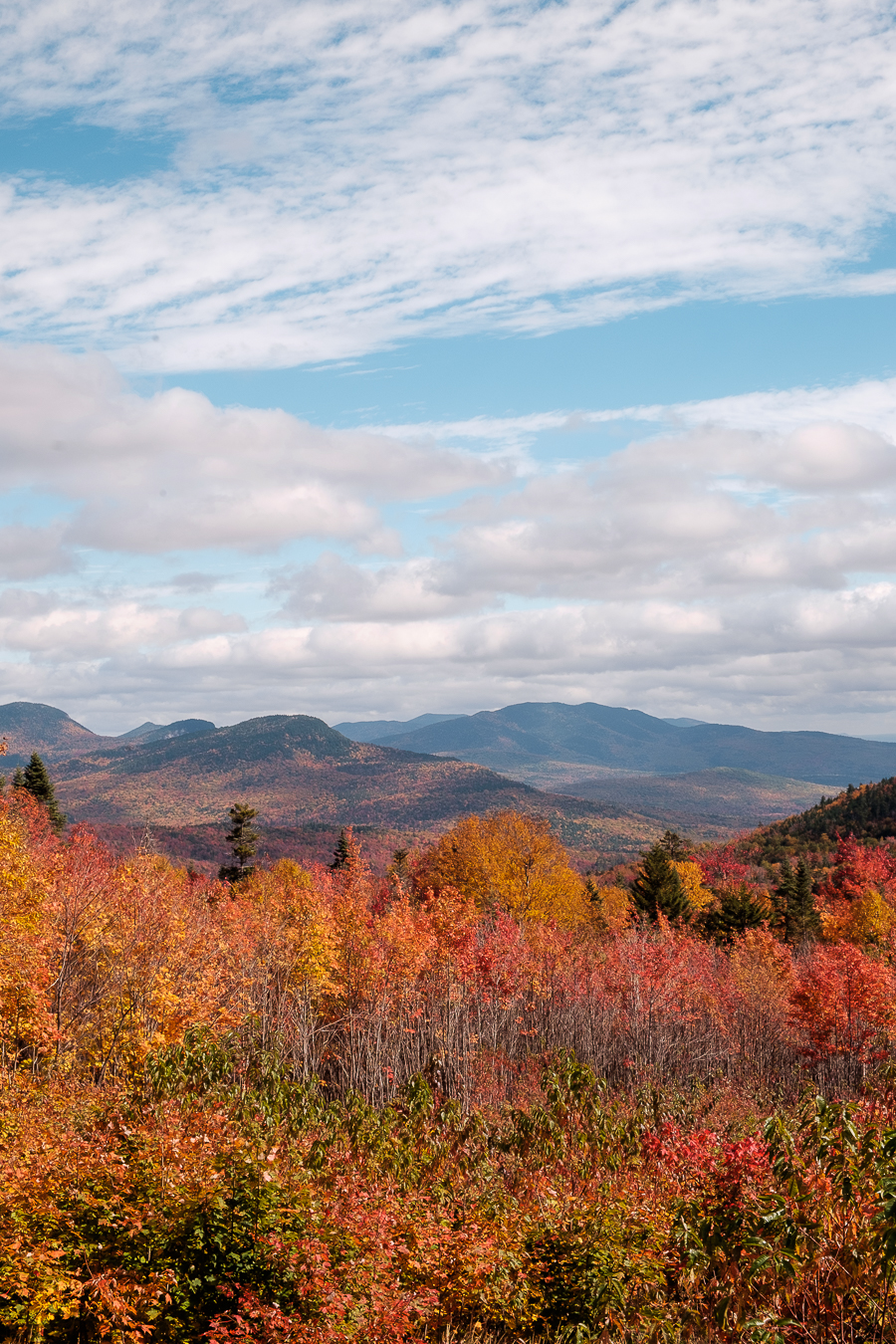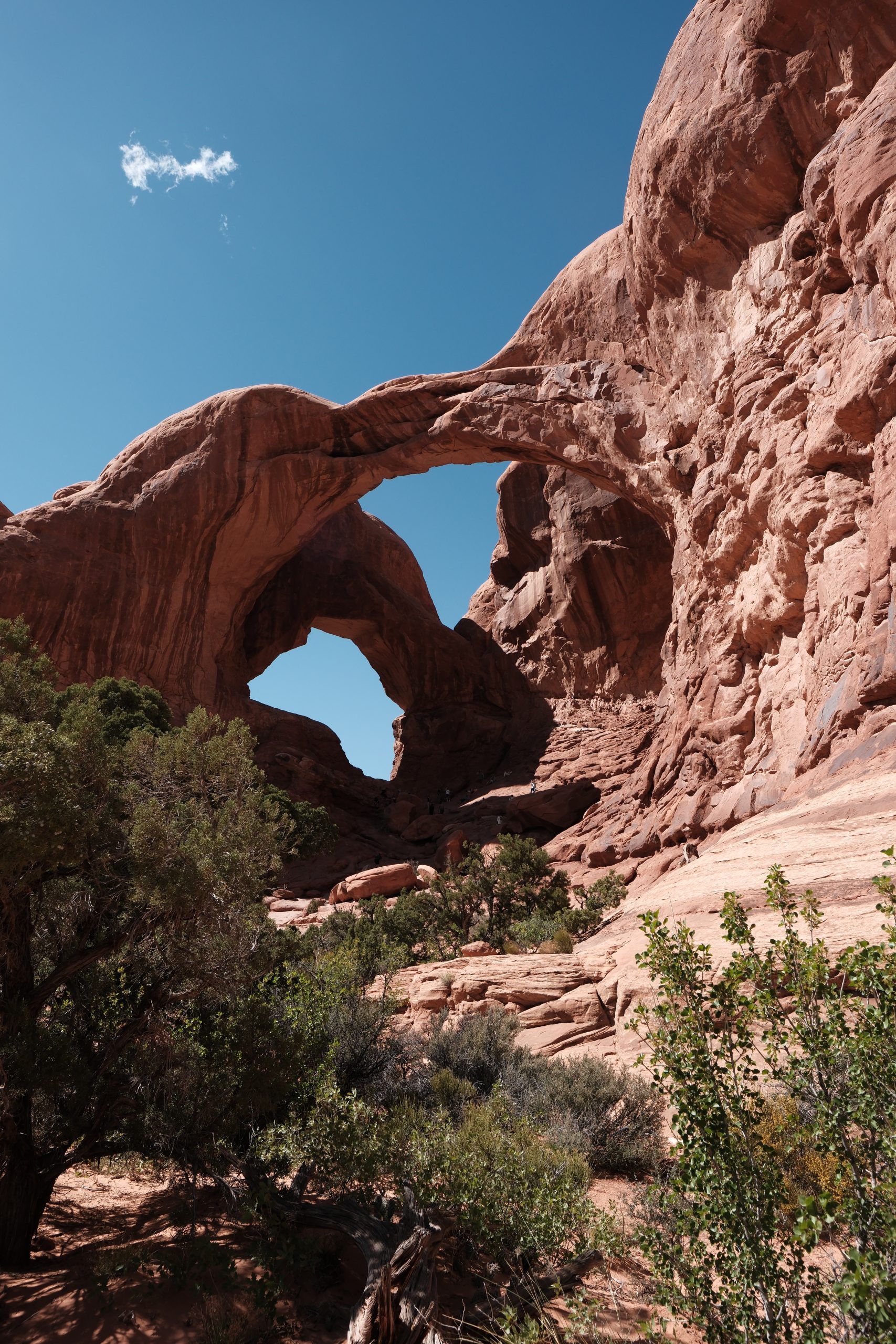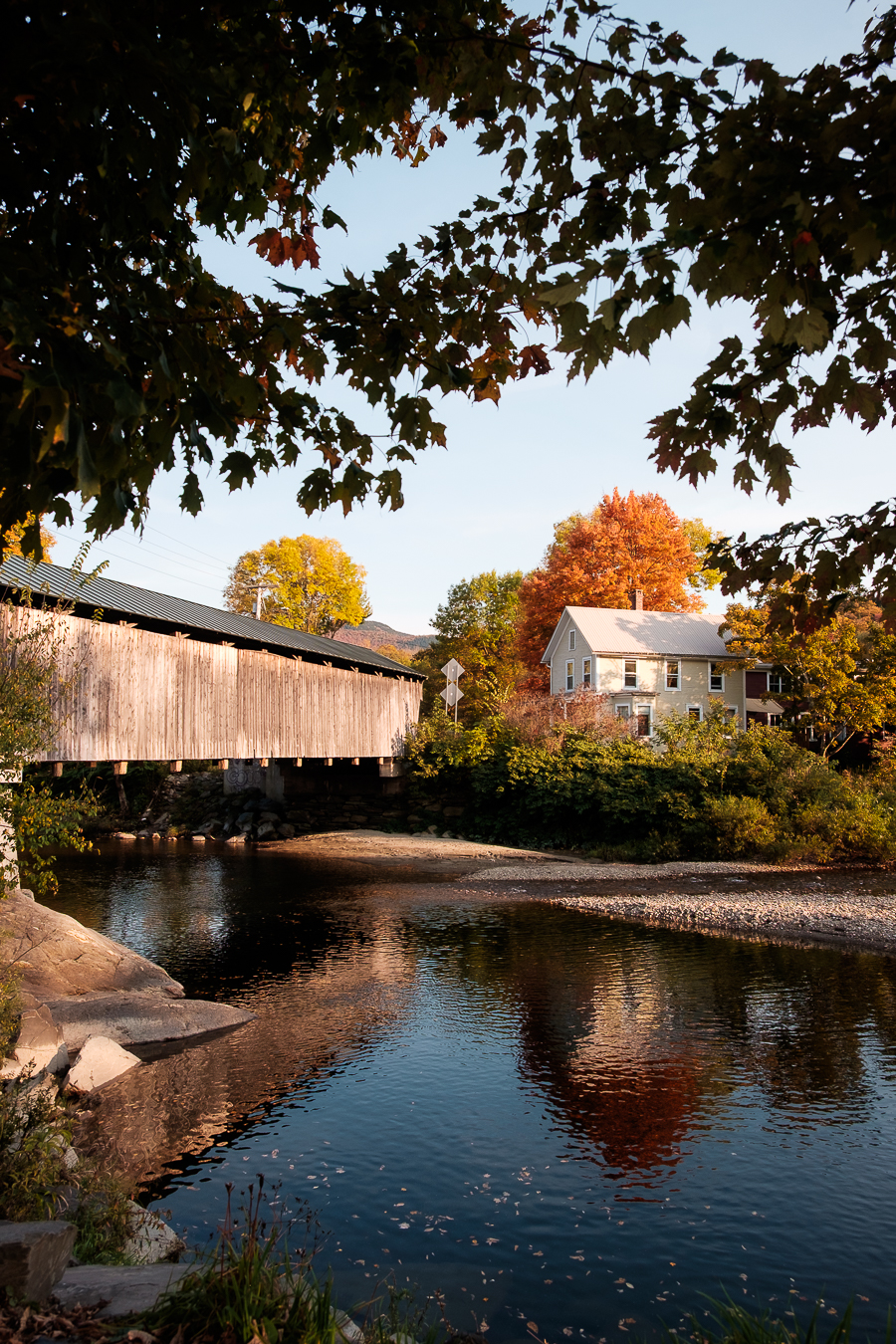Grand Teton National Park in north western Wyoming, is world-renowned for its dramatic mountain scenery, but for many visitors, including us, the park’s abundant and diverse wildlife is just as compelling. With healthy populations of moose, grizzly bears, black bears, bison, elk and even wolves, Grand Teton is one of the best places in North America to see wildlife in its natural habitat. In particular, it is one of the best places to spot moose.
We spent two and a half days in the park in early May and were stunned by the number of wildlife encounters we had, many of them surprisingly close. This guide is based on that trip and is packed with tips on the best wildlife hotspots, the best times to visit and how to responsibly maximise your chances of seeing animals.
If you’re also planning a trip to Yellowstone National Park, you’ll want to check out these wildlife viewing tips.
And you may be interested in our other guide about visiting Antelope Island State Park which is one of the best places to see bison.
Our wildlife sightings (2.5 days in May)
To give you a sense of just how much wildlife you might encounter in Grand Teton, here’s a breakdown of what we saw during our 2.5 days in the park:
- 12 x moose
- 4 x grizzly bear
- 1 x black bear
- Many bison
- A huge number of elk
- 3 x fox
- 2 x coyote
- 1 x beaver
- 2 x musk rat
- Lot of pelicans
- 1 x red tail hawk
We weren’t sure if we were just lucky or if early May was a prime time, but we think our approach played a big role in the number of sightings.
Best time of year to see Grand Teton National Park wildlife
Different times of year offer different wildlife viewing experiences and how much you see can vary widely deepening on when you visit:
Spring (April to early June):
Spring is arguably the best season for wildlife viewing in Grand Teton. As the weather warms up, animals become more active and move to lower elevations, making them easy to spot. Grizzly bears and black bears emerge from hibernation and are often seen grazing in grassy meadows or grassy road verges. Moose, bison, elk and deer are also seen grazing in meadows and Spring offers the chance to see babies such as red dogs (baby bison) and bear cubs.
One thing to keep in mind about visiting Grand Teton in Spring, is that Teton Park Road is usually closed up until the 1st May due to snow. While wildlife can be seen from other areas of the park, this road covers a large area which you won’t want to miss. You can check for road closures on the national parks website.
Summer (mid-June to August):
Long days and good weather make summer a great time to visit, but hotter temperatures can reduce sightings as animals seek shade or head to higher elevations. Moose in particular are harder to find. Summer is also the park’s busiest season, so expect traffic, especially around wildlife jams.Summer is a great time to visit as many animals are out and active, the days are long and the weather is warmer and drier.
Autumn (September to October):
Autumn offers a great opportunity for watching wildlife as many animals prepare for winter. Bears feed extensively during this time before going into hibernation, so they can often be spotted. Moose are often spotted during autumn as they come down from higher elevations in search of food. Moose antlers are at their peak growth in autumn, which is a fantastic sight to see. Autumn is also the mating season for elk and visitors can witness the impressive mating displays.
Winter (November to March):
Winter offers a unique perspective as snow covers the landscape. It’s a fantastic time to see moose, elk, wolves and bison. Winter can be extremely cold in the Tetons so keep this in mind. Some areas of the park may also be closed due to snow, including Teton Park Road and Moose-Wilson Road which close for the winter.
Best time of day to see Grand Teton National Park wildlife
In general animals in Grand Teton are most active at dawn and dusk and up to 2 hours after sunrise and up to 2 hours before sunset. During the day can be harder to spot animals as they’re often resting. That being said different animals are active at different times of the day so plan to arrive in the park before sunrise and stay past sunset fi you want to increase your chances of sightings.
Here’s when we saw specific animals: Keep in mind that we visited in May when the sunrise was just after 6am and sunset was just before 8.30pm.
Moose – are most active during dawn and dusk as they prefer low light conditions. All but one of the moose we saw were just before sunrise and just after sunset when it was slightly dark, so if you do want to see a moose we recommend being out at these times.
Grizzly bears and black bears – similarly bears are more active during dawn and dusk, but unlike moose they can be active at any time of the day. We saw grizzly bears in the park early morning, between 7-8am and early evening between 6-7pm. The black bear we saw was in the afternoon between 2-3pm.
Bison – are active any time of day, however, they often graze in the morning and evening. We saw bison at all times of day.
Elk – are more active during early morning and late evening. We saw them at all times of day but a lot more appeared around dawn and dusk.
Wolves – are also most active during dawn and dusk and prefer low light conditions. While we didn’t see any wolves in Grand Teton, we saw wolves in Yellowstone all early morning except one lone wolf which we were surprised to see mid-afternoon.
Coyotes – are most active during dawn and dusk and these are the times we saw them.
Foxes – the same goes for foxes. We saw them only at dusk.
Beavers – are most active during dawn and dusk. We have only ever seen beavers active at dusk including the one we saw in the park.
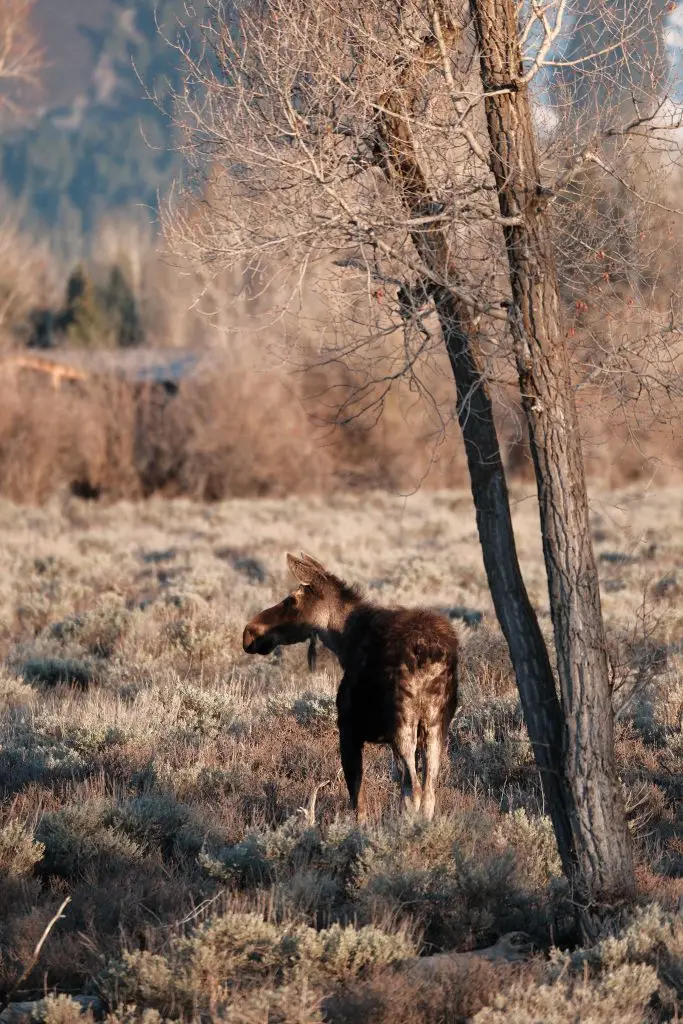
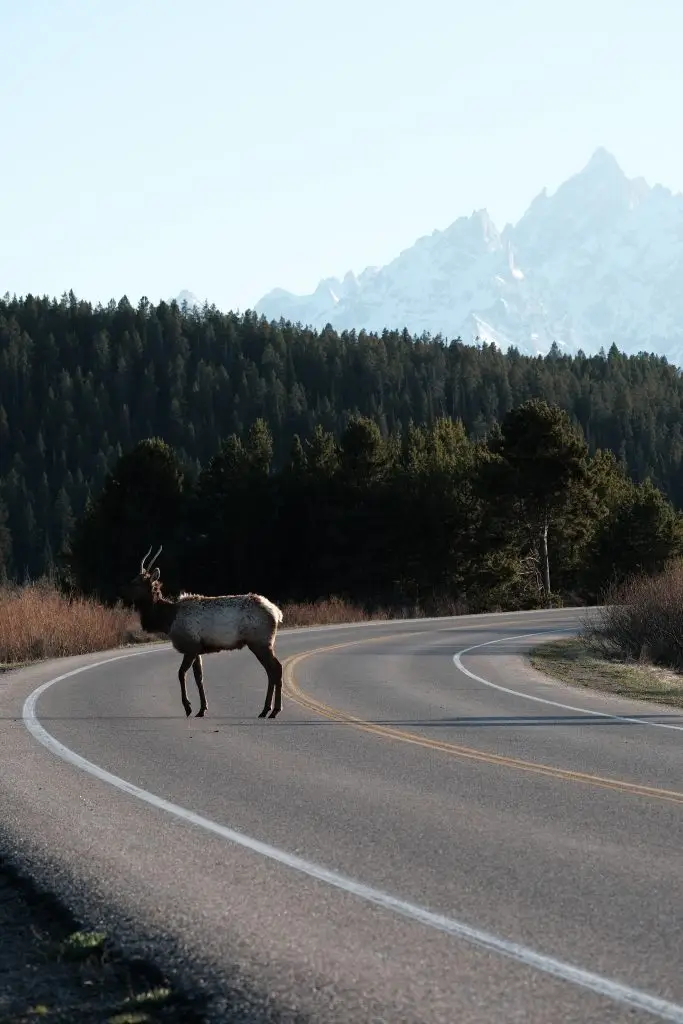
Top wildlife hotspots in Grand Teton National Park
Wildlife can appear anywhere in the park at any time, but some locations consistently offer more sightings. Below is a breakdown of the areas we had the most success:
Oxbow Bend: This is a great place to see wildlife throughout the year, particularly beavers, musk rats and a wide variety of birds including American White Pelicans – all of which we saw. A lot of websites will tell you that you can see moose here, however, we did not see any in this area when we visited.
Willow Flats: This area just before Jackson Lake Dam is particularly good for seeing grizzly bears, especially in spring when they are foraging for food. As well as a grizzly, we also saw coyotes and elk in this area.
Teton Park Road: Black bears are often seen down this road, as well as moose and foxes.
Gros Ventre River: Moose are frequently seen along the river and in the grassy meadows here. Particularly off Route 191 before reaching the turn off for Jackson airport. This is where we had the majority of our moose sightings.
Antelope Flats Road: This is a popular spot to see bison, moose and pronghorn. We saw a large herd of bison along this road.
Elk Ranch Flats Turnout: Herds of elk and bison congregate in the meadows here along Route 191.
National Elk Refuge: The refuge is a prime spot for viewing elk, particularly during winter months.
Moose Wilson Road: Moose can be seen in the wetland area along the section of road closest to Moose. Beavers are also seen here. As the road becomes more forested, black bears can be seen as well as foxes. Bighorn sheep can often be spotted along the roadside near the Teton Village in winter. Our only sighting down this road was of a fox.
John D Rockefeller Memorial Parkway to Flagg Ranch: Close to the south entrance of Yellowstone, grizzly bears can sometimes be spotted here.
Important tips to responsibly maximise wildlife sightings
To conclude, while a lot is down to luck, there are some things you can do to maximise your chance of seeing wildlife in Grand Teton National Park. Here’s what made a big difference for us:
- Start early and stay late: Try to be in the park just before sunrise and stay until just after sunset. While we saw animals throughout the day, the majority were clustered around the early morning and evening hours. Bring snacks and water and plan for long days.
- Balance patience with exploration: While it’s essential to be patient and take time to observe animals, we also suggest to keep moving around the park. We struck a balance between staying put at known hotspots and slowly driving loops around the park. Some wildlife enthusiasts and photographers will stay in a certain spot that they know is good for wildlife and often their patience pays off as they will capture an incredible moment. However, we think that a balance between moving to different areas in the park and waiting in one spot provides a better chance of seeing more wildlife, particularly if you’re only in the park for a short amount of time. Both approaches can work. Some sightings can happen because you waited; others because you didn’t. We have tried both: staying in one spot for a couple of hours and moving on after 10 minutes if we didn’t see anything. We drove slowly in a loop around the park, keeping our eyes peeled, driving smaller roads where we could and stopping at various spots to scan the landscape.
- Talk to people: One of the best tips we can provide is to chat with rangers, photographers and other tourists. Most people are there to see wildlife and most are happy to share recent sightings. Rangers have a wealth of knowledge about animal behaviour and where they like to hang out. If you are staying in the park for longer than a day you’ll start running into the same familiar faces who are all looking for wildlife sightings.
- Follow the crowd: If you see a convoy of cars or a group pulled over, stop. This is the easiest way to find wildlife. People use radios and word spreads quickly.
- Bring binoculars and/or a spotting scope: Unlike its neighbour, Yellowstone, where the majority of animals are seen very far away, Grand Teton for one reason or another offers a chance to see wildlife closer. However, it’s still best to have binoculars for those animals who aren’t quite so close. We wouldn’t say a spotting scope is needed in Grand Teton, whereas it definitely is in Yellowstone, but it can help.
- Safety: Safety is the most important aspect when viewing wildlife, for the animals as well as for yourself. It really is important to keep your distance from animals and don’t feed them. Listen to the rangers and do what they say. They know the animals the best and want to keep everyone safe.
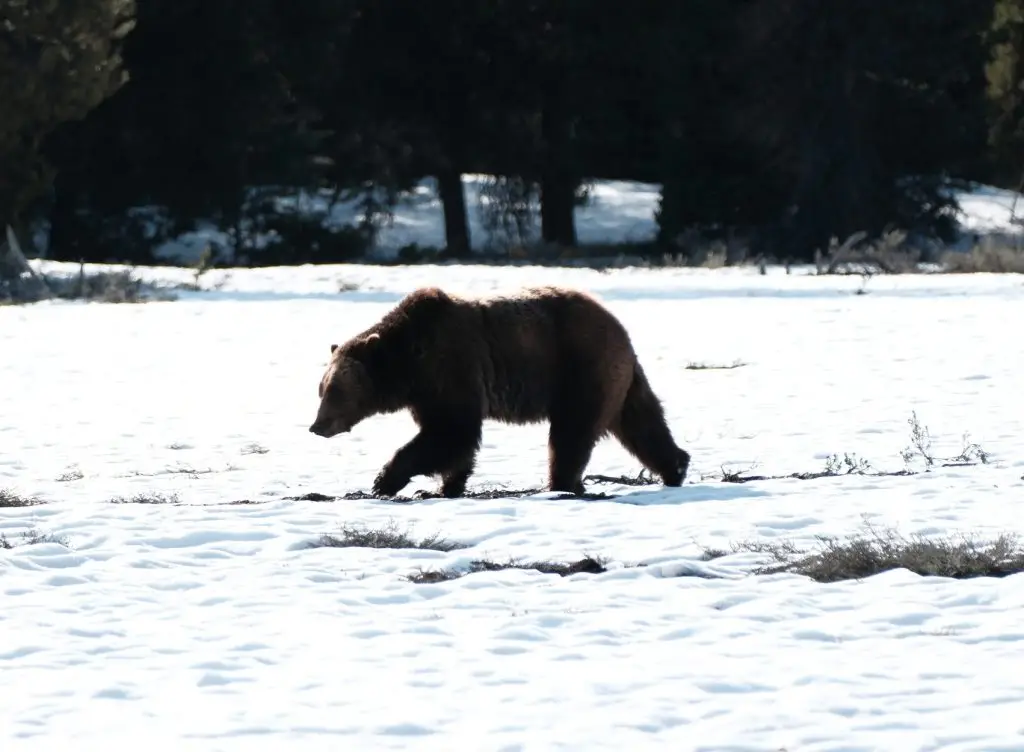
If you have any questions let us know in the comments box below. We’d love to hear from you!

